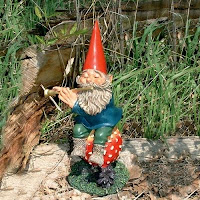Many sensory plants are herbs and are best started in the spring, but some are perennials, which can do much better during the first summer season if they are allowed to overwinter. In the high country Zone 5, where I live, September and early October are ideal times to plant these perennials.
But first, let’s start with some ideas for what to grow in a sensory garden. I’ve starred** the plants that can be planted in the fall. If you do want to grow a sensory garden, it would be good to plan out the whole garden, growing plants with similar water requirements together, and arranging plant heights accordingly. Many sensory plants will be spring plantings, so you’ll want to leave room for them, too!
Plants for smell:
One of my son’s favorites is lemon balm (Melissa officinalis). He picks the leaves and sighs, “mmm, lemons,” with a dreamy look on his face (which is saying something, since he’s four). And then there is lavender, scented geranium, the mints (especially pineapple mint), lily of the valley** (a perennial), agastache** (licorice hyssop), and most herbs. Eli surprised me this year when he smelled the basil and then gobbled up a “basil” soup (that was largely spinach and potatoes, with fresh basil thrown in). He has never eaten it before that I can recall, and it’s an excellent example of the ownership and interest children demonstrate in eating from their own garden.
Plants for taste:
 |
| Nasturtium |
Plants for sound:
 |
| Money Plant |
Plants for texture/touch:
Bunny tails are a favorite of mine. They can tolerate some neglect and drought but also do well with frequent watering. Eli waters the bunny tails quite a lot and they’ve been content all summer long. Eli did enjoy seeing these come out and feeling the soft tails. One thing I noticed was when he did “pet” the tails, it released a lot of pollen, and potentially seed, so I am hopeful that there may be some “volunteers” in the garden next year.
In my experience, all plants are interesting for children to touch, and they will enjoy having a special place where they know it is okay to touch the plants. Amaranth is a nice plant, as its flowers are velvety to the touch,and its grain, from the Andes, is delicious and a complete protein. Jerusalem sage** also has very soft leaves. Another favorite is lamb’s ears**, as they are so soft to the touch. When Eli was 2, this was his favorite plant, and we would pluck “just one” from neighbor’s yards on our walks (we didn’t have a suitable site for them at the time). I’d rub it gently across his cheeks.
Depending on the space you have, you might also grow some plants that have other textures, such as prickly plants (cactus, coneflowers or Echinacea, hens and chicks). These plants generally grow well in full sun and require little maintenance. And indeed are prickly. I cannot recommend that you plant thistle anywhere, because it just becomes too weedy and if it’s not native, it also becomes invasive to other areas.
 |
| Snapdragon |
Plants for sight
 |
| Goose neck gourd |
****
I took a break while writing this to play with Eli outside. It’s late August, but we made an “ice castle” for his garden gnomes outside the house. I asked him what plants he liked to touch at the garden, and he said “mint, because I like to eat it.” When I asked what plants he liked to touch because of the feel he said, “lamb’s ears. . . we should plant more touch plants next year!” So, there you have it! While we were playing with his gnomes, I also thought that maybe I should add a “sixth” sense to the garden. Call it mystery, wonder, protection, but these garden gnomes hold some kind of magic and mystery for Eli. They are said to protect the garden, but I think they just make him feel good and safe.



No comments:
Post a Comment